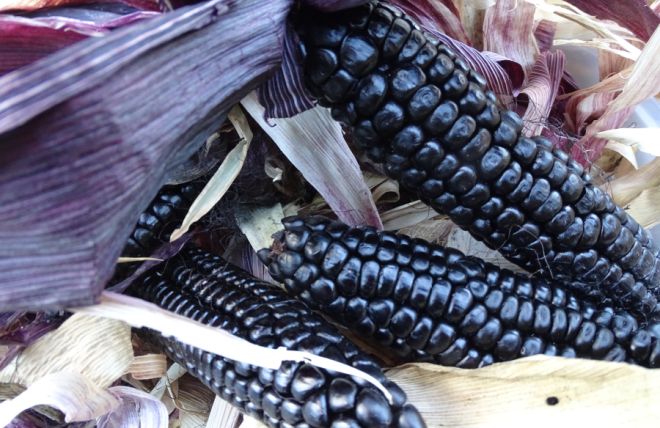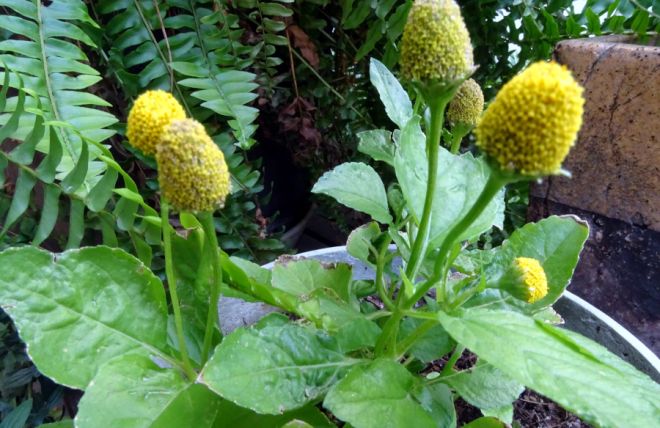Many medicinal plants are easy to grow and have incredible healing properties. Here are a dozen I grow here in my garden in Northern New Mexico along with notes of caution in their culture and use.
Calendula (Calendula officinalis). This flower has anti-inflammatory and antiseptic properties. Ingested, it helps stomach ailments such as gastritis, some ulcers, and colitis. It can be used as a liver cleanser as well. You can use the flowers in tea, oil infusions, or in salves to help with internal and external ailments. Calendula is easy to grow and a beautiful border plant. I happen to love the flowering properties of the variety known as the Radio Calendula, which we carry. Calendula can be direct sown or started inside 6 weeks before last frost. Plant in full sun after the danger of frost has subsided. To encourage growth throughout the season, fertilize with compost tea and deadhead.
Chamomile (Matricaria chamomilla). Chamomile is another striking garden plant with white, daisy-like blossoms. The tea is great for minor digestive problems. Dried flowers can also be used as an aromatic where its scent is relaxing. Chamomile shows up in all sorts of shampoos and soaps where it relieves rough and sore skin. An extract can be made which is a powerful tonic for stress. You can grow chamomile in partial shade to full sun. It is planted in the spring and is quite drought-tolerant. We grow lots of it in the front garden along the road
Peppermint (Metha x piperita). Peppermint is an antimicrobial and works against many water borne bacteria. The tea is invigorating and the leaves are soothing for a sore throat, cough, and cold. Peppermint prefers a sunny location and moist soil, although it can tolerate part shade. A sunny spot is better as it increases the essential oils. We have it along one of our small ditches where it has been for years. Unlike some other mints, it does not spread rapidly.
Holy Basil (Ocimum tenuiflorum). Indigenous to India, holy basil counters hyperglycemia, it is an anti-inflammatory, anti-microbial and expectorant. As such, the tea is good for treating diabetes and cold or cough symptoms. It has been shown to help with as asthma and reducing fevers. The juice from this plant can be extracted and applied to insect stings, ringworm, and other skin ailments. Plant in full sun about a quarter inch deep.. or start early in a sunny windowsill. Keep the soil moist but avoid over-watering.
Plantain (Plantago major). Here common plantain is considered a weed. However plantain has important medicinal properties well-known to the Pueblo People who used it for to dress wounds and for inflammation and infection. The leaves can be also used as poultices to treat insect bites, snakebites, sunburns and cuts. As a tea it helps with cold symptoms. It is also a healthy salad green with a taste and texture like chard. Plantains love moist soil, and are easy to grow.
Hyssop (Hyssopus officinalis). Hyssop has astringent, relaxant, diuretic, and wound-healing properties. It is helpful in soothing sore throats, and coughs. It has also been known to help combat asthma. Because it also relaxes muscle, it is helpful in aiding digestive problems. Be careful, though – it has also been linked to epileptic seizures. Once established it just needs normal watering. It should be grown in full sun.
English Lavender (Lavandula angustifolia). Lavender has analgesic (pain relieving) properties, is an antidepressant, antifungal, antioxidant, antiviral, and acts as an effective sleep aid. It can be combined with valerian or chamomile in tea, spayed onto the sheets as lavender oil, or dried flowers can be sewn into a pillow. Lavender is also powerful at curing headaches. English Lavender prefers full sun and slightly alkaline soils which is exactly what we have here in New Mexico.
Hops (Humulus lupulus). Hops grow up the north latilla fence of our property. It is well-known as a preservative in beer and ale. The cones promote good night’s sleep. It also has anti-spasmodic and diuretic properties. The bitter nature of hops stimulate digestion. Hops shouldn’t be given to young children because it may interfere with hormonal balance. A hops rhizome should be planted in early spring when the soil can be worked. Keep the rhizome moist but not in boggy soil. Once sprouts rise from the soil, pick the strongest and healthiest and start to train up a trellis. Cut back the weaker ones. Once established, water several times a week. Keep the base of the plant relatively thinned out to prevent powdery mildew.
Hawthorn (Crataegus ambigua). The bark has astringent properties which helps in treating fevers. Hawthorn promotes heart health by dilating the blood vessels and reducing blood pressure. It also acts a a mild sedative.. You can grow these from seeds or cuttings. The berries germinate quite quickly. Once the plants have been established, only basic maintenance is needed as hawthorns are hardy. Prune only in the winter as the plant is susceptible to fire blight.
Elecampane (Inula helenium). Elecampane is a tall bushy plant with beautiful sunflower-like flowers that attract pollinators. A tea is made from the root to treat colds, coughs, asthma, loss of appetite, intestinal worm and digestive problems. Tinctures and extracts are also made from the root and can help treat cold and cough symptoms. Grow this plant in partial sun with moist, well drained-soil. Minimal maintenance is needed for this plant. It is a perennial.
Hemp (Cannabis) Growing in acceptance for its remarkable pain-reducing properties and as a muscle relaxant, the essential compounds (CBD and other terpenes) are extracted and taken internally or topically as salves. CBD is also an excellent sleep aid and helps relieve anxiety and depression. At this time you will still need to check if this plant can be grown legally in your state. We have seed for many of the common varieties and continue to refine our crosses.

